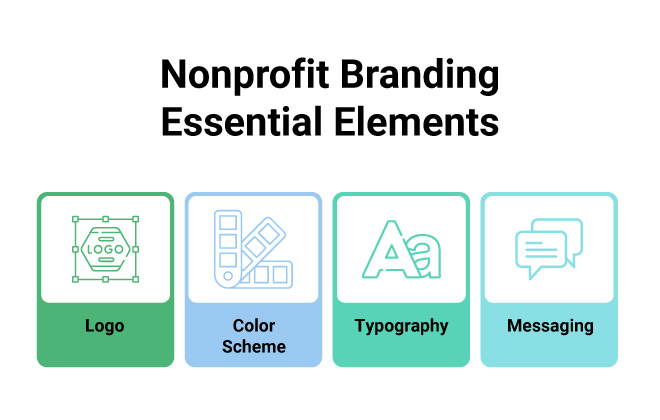
Your nonprofit relies on community engagement for nearly every aspect of its work. Whether they donate to fund mission-critical initiatives, volunteer to provide extra helping hands for your team, or participate in the programs you’ve created, community members allow your organization to thrive.
Compelling communications are essential to reach all of your nonprofit’s audiences, and one proven way to make your messages more engaging is through storytelling. Stories allow your organization to share its impact in an attention-grabbing way that inspires your community to join in making a more significant difference in the near future.
To help you effectively incorporate storytelling into your nonprofit’s communications, this guide will first review some essential elements of nonprofit storytelling before providing a few tips to elevate your impact stories.
Essential Elements of Nonprofit Storytelling
While your nonprofit’s stories should include similar elements to those present in fictional stories, such as a main character and structured plot, remember that you’re sharing true stories about real people. Additionally, the goal of your story is to inspire action, so clarify the next steps you want your audience to take after each story. Let’s dive into each of these aspects in more detail.
Characters
Since your stories will be relatively short, they should usually focus on just one main character. There are a few categories of individuals you could highlight in your nonprofit’s stories:
- Staff members can give audiences an inside look at your organization’s operations, but this group will likely be the hardest for community members to connect to.
- Loyal supporters are usually the most relatable main characters in nonprofit storytelling, although it’s often difficult to highlight your organization’s impact when sharing their stories.
- Individuals your organization serves are the most compelling main characters in nonprofit storytelling, as their stories often elicit strong emotional responses while directly demonstrating your organization’s impact. However, these individuals’ stories may be sensitive, so obtain consent before sharing their information and respect subjects’ privacy if they ask you not to use their real names or photos.
Let’s say you work at an animal shelter that recently completed a capital campaign to expand its on-site veterinary care facilities. You could incorporate the stories of all three types of community members by:
- Including staff member testimonials in construction progress updates
- Thanking the campaign’s major donors by spotlighting them in your annual report
- Telling the stories of individual animals that receive care at the new facility in future fundraising appeals
Highlighting different main characters in this way helps demonstrate the initiative’s various impacts in the most compelling contexts.
Plot
When telling stories about your nonprofit, it’s tempting to skip directly to the end to highlight your impact. However, the story’s beginning and middle provide key details to draw readers in and explain the specific work your nonprofit did to make its positive ending possible.
Returning to the animal shelter example, let’s say you’re telling the story of a cat who received treatment at your new veterinary care facility. Start at the beginning of the story, when a Good Samaritan found the cat on the side of the road with a broken leg. Knowing that your organization had just opened this state-of-the-art facility (thanks to your donors’ generosity!), they brought the cat to you. Then, your veterinary team quickly performed surgery so the cat’s leg could heal completely, and it went to its forever home happy and healthy.
Call to Action
Each of your nonprofit’s stories should naturally lead into a specific call to action for your audience, such as:
- Donating to a specific initiative or campaign
- Signing up to volunteer
- Registering for a fundraising event
- Participating in a program
- Sharing the story to increase awareness of your mission
Depending on how the animal shelter in our example tells the story of the cat with the broken leg, the call to action could ask audiences to share the story, donate to support other animals’ care, or volunteer at the new facility. Include relevant links or buttons in digital content and mail-in return slips or QR codes in print materials so it’s easy for audiences to take the intended next step.
Tips to Elevate Your Impact Stories
Once you’ve laid the foundation for effective nonprofit storytelling with the elements listed above, use the following tips to make your stories even more impactful.
Back up Stories With Data
The unique power of storytelling is that it engages readers’ emotions more than simple facts can, making it more likely toinspire action. However, some of your supporters need to know the facts before they get involved. Accompanying stories with relevant, concrete data will get these audience members’ attention and ground each situation in reality.
In our animal shelter example, the organization could share data like:
- The number of additional animals the new veterinary care facility will allow them to treat per year
- The projected increase in positive outcomes for rescue pets alongside their impact stories
- Specific illnesses or injuries they’ll have an easier time treating thanks to the new facility
Besides improving their messages’ audience appeal and trustworthiness, including this data also demonstrates that the completed project has wide-reaching effects beyond a single case study.
Tell Stories Across Multiple Channels
It’s no secret that multi-channel marketing maximizes your nonprofit’s reach, and many of your core communication channels lend themselves to storytelling in different ways. For example, you could:
- Write story-focused blog posts and embed testimonial videos on your nonprofit’s website
- Begin emails or direct mail messages with a relevant story to get readers’ attention before diving into the content’s main purpose
- Leverage photos, graphics, and short-form videos to tell stories on each of your organization’s social media platforms
Additionally, you could use a story as the framework for a presentation to key stakeholders or at an industry conference to demonstrate your nonprofit’s impact to a live audience.
Incorporate Your Nonprofit’s Branding
Your nonprofit’s brand makes it stand out from other organizations in the sector by presenting its mission and values recognizably and memorably. Ensure all of your organization’s storytelling content also features key branding elements, such as your:

- Logo. Loop’s nonprofit logo design guide describes this aspect as “the visual representation of your organization’s identity. It translates your mission, vision, and values into a graphic that encapsulates…the impact you strive to make.”
- Color scheme. You should know not only the names of your brand colors, but also their unique hex codes (for example, “maroon” could be #76232F or #870E05) so you can input the numbers into any graphic design tool and always get the same shades.
- Typography. Consider legibility and professionalism as you choose fonts, and maintain consistency of typefaces, sizes, and weights throughout your content.
- Messaging. Branding extends beyond visuals to your nonprofit’s writing style, tone, and word choice, so make sure those elements are well-defined in your stories.
Before publishing stories, reference your organization’s brand guide to ensure you’ve applied all of these elements correctly.
By following the tips above, you’ll be well on your way to telling compelling stories that effectively communicate your nonprofit’s impact. As you create content, monitor audiences’ responses to your stories so you can continue to hone your strategy over time.
0 Commentaires